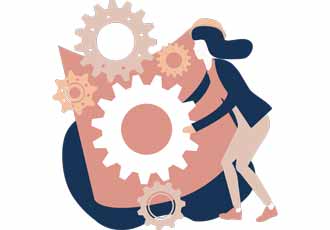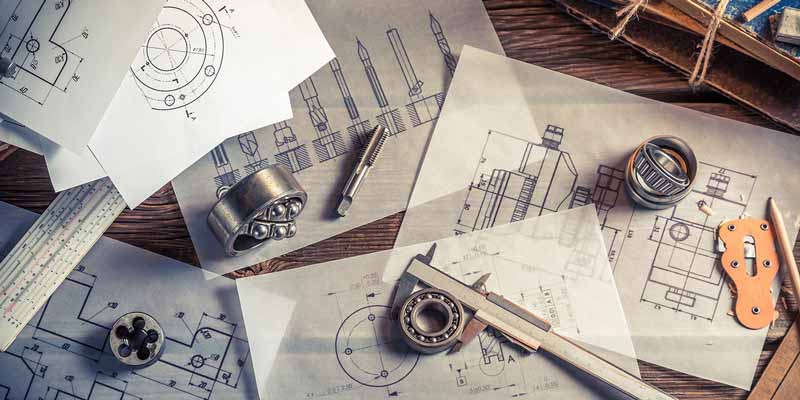Empowering women in the engineering industry

According to the MSCI Women on Boards, 2015; companies with more female representation on their board of directors deliver a 36% better return on equity than businesses with fewer women on board. As the world of engineering develops and progresses, there are still some areas that haven’t entered the 21st century yet. For example, the amount of women studying in engineering has basically remained the same since 2012.
The number of female A-level physics students 25 years ago was around 20%, this number remains the same today.
There is the traditional stereotype that industries such as this one are often not suited to women, as construction and manufacturing can conjure up images of factories, heavy machining, lifting and noisy building sites. It has been reported that some women on construction sites have been handed a pink hard hat to wear. However, the construction industry is changing for the better.
Helen Wollaston, CEO and Chief Executive from WISE said the industry has changed, and continues to change for the better. “There were 13,000 more women working in STEM occupations in the UK in 2016 compared to the year before. We have recruited 30% more corporate members in the past year, as interest grows from those who want to attract more women, from classroom to boardroom.”
Past President, Fellow and Trustee of the Institution of Engineering and Technology (IET), Naomi Climer is listed in the Daily Telegraph and Women’s Engineering Society 50 Most Influential Women in UK Engineering in 2016 and in Computer Weekly’s 50 Most Influential Women in UK IT 2015 and 2016.
She also works on the Board of Sony UK Technology Centre, and Chairs the DCMS Future Communications Challenge Group and is a Commissioner on an independent commission on the Future of Work.
Climer studied chemistry at Imperial College London, and as a child never really had an interest in engineering. “After graduating, I was accepted onto a graduate scheme run by the BBC that combined hands-on experience with further academic study to train as a broadcast engineer. It was a conscious effort by the BBC to broaden their employee profile, both in terms of the gender balance and just in the type of people they had.”
It is not a secret that the industry has always been male-dominated, in the past most professions such as engineering, medicine and construction have predominately had male workers, now many have been transformed and employ a large number of women, for example jobs in medicine are now divided fairly evenly between the sexes.
Climer commented: “Contrastingly though, engineering has remained stubbornly stuck in the past. Men still hold down 91% of jobs. That is simply not acceptable. Indeed, it is harmful. We cannot hope to recruit the numbers of engineers we need in the near future if we are effectively excluding half the population from taking part.”
She believes this stems from teachers and parents and they were still discouraging children from considering professions in engineering by depicting it as drab or dirty. “What so many young people don’t realise is that engineering will give them work wherever they want: in the office or out of doors; on your own or as part of a team; working with computers or without them.”
The IET is investing a considerable amount of resource into challenging these perceptions, with teachers and parents, and young people.
Climer added: “Many people aren’t aware of the incredible breadth of engineering in the 21st century. Today engineering covers everything from designing our future cities and transport to coming up with new healthcare technology. We could do more to remind parents, teachers, women and girls that engineering is a way to make a difference in the world, to help people, to save lives and to solve the real world challenges of everyday life.”

Harriet Kirk, Senior Geotechnical Engineer at Atkins focuses on problems relating to the ground, and involves dealing with tricky design problems for a wide variety of projects. After graduating with a history degree, Kirk found out the hard way that, what was really needed was people with technical skills like doctors and engineers, so decided to consider engineering as a career and change pathways.
She said the main challenges for women in the industry is around the expectation of what an engineer looks like (typically a white man in a hard hat) and expectations of what girls will enjoy or be capable of. “There aren’t that many visible role models of women in engineering, particularly in senior roles, so girls may never pick up on it as an option. And when I was at school, engineering was never suggested as a career to girls, even ones like me studying maths and physics.”
Wollaston also expressed concern on the image of the industry, and said: “Engineering has a male image, more so in the UK than in other parts of the world. It has become something of a vicious circle – girls don’t see any role models of women working in these industries so they assume it is not for them.”
It is difficult to get women into the industry at c-level, as in order to have female chief engineers, they will have had to start from somewhere and worked their way up. But because the female gender has been so under represented, there are not that many female engineers with the relevant and necessary experience - maybe in a few years to come with the resources and encouragement we have today this will be a different story.
It is fair to say that the numbers of women at graduate level have certainly increased, but Kirk explained how she isn’t sure how far this will translate into attracting more female leaders. “This could maybe attract the female leaders of the future, if we manage to make sure that women stay in the industry.”
Encouraging women into the engineering industry has been a topic that has been discussed and many tactics have been tried, and there is still a lack of females, but are we seeing any improvement and what more can possibly be done?
Working for WISE Wollaston explained that the company has put together 10 steps (which can be found attached below) which includes practical action that employers can take to improve opportunities for women in their company.
Wollaston said: “There isn’t one magic bullet. A systematic approach, led from the top and monitored by the Board is what makes the difference.” She added: “When looking for jobs find out what companies are best for women, and be confident about your own worth and ask for what you need to make the job right for you.”
Climer expressed that we need to change mind-sets about how to become an engineer. “The traditional degree route remains important – but apprenticeships are an increasingly popular and valid route. We need strong and positive engineering role models who can help us inspire the next generation of engineers. Engineers themselves need to get better at promoting what they do.”
Kirk certainly believes it is very important to get girls at an early age, to challenge assumptions about gender roles which might discourage them from pursuing a STEM career, and partly to inspire them with the possibilities. She expressed: “It’s important to try to keep girls interested in STEM subjects at A-level, especially maths and physics, because even if they’re not interested in a technical career now, it gives them the option of picking it back up later on (which is what I did). It’s great that lots of companies have engineers going into schools to teach students what engineering is and inspire the next generation – Atkins does a lot of this.”
However, looking further, Kirk pointed out, that maybe the problem does not end with the lack of females in the engineering industry.
Kirk explained: “Even though there is a big focus on getting more women into the industry, and on encouraging diversity in general, it is still really important to mention that because it’s not just women who are under-represented in civil engineering – the industry is also overwhelmingly white, heterosexual, and able-bodied.”
You can see more from Rajapack's article 'Beating the Bias' here.
Downloads
Similar articles
More from Electronic Specifier
- Building the case for construction offices in 2021 20th May 2021
- UK construction: is the industry finally on the up? 26th August 2020
- Speaking to a younger generation of women in tech 11th August 2020
- Engineering firms encouraged to get ‘2020’ vision 6th January 2020












Write a comment
No comments